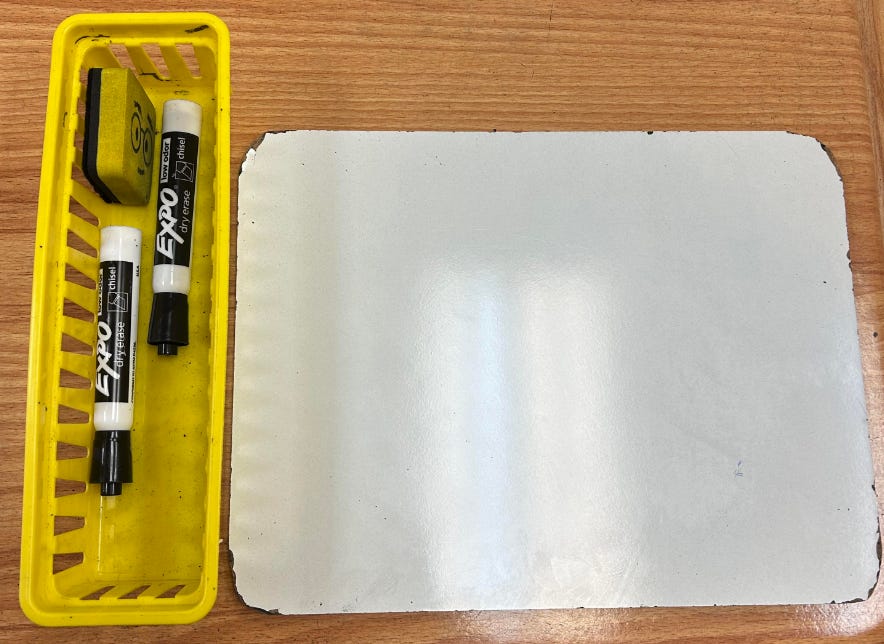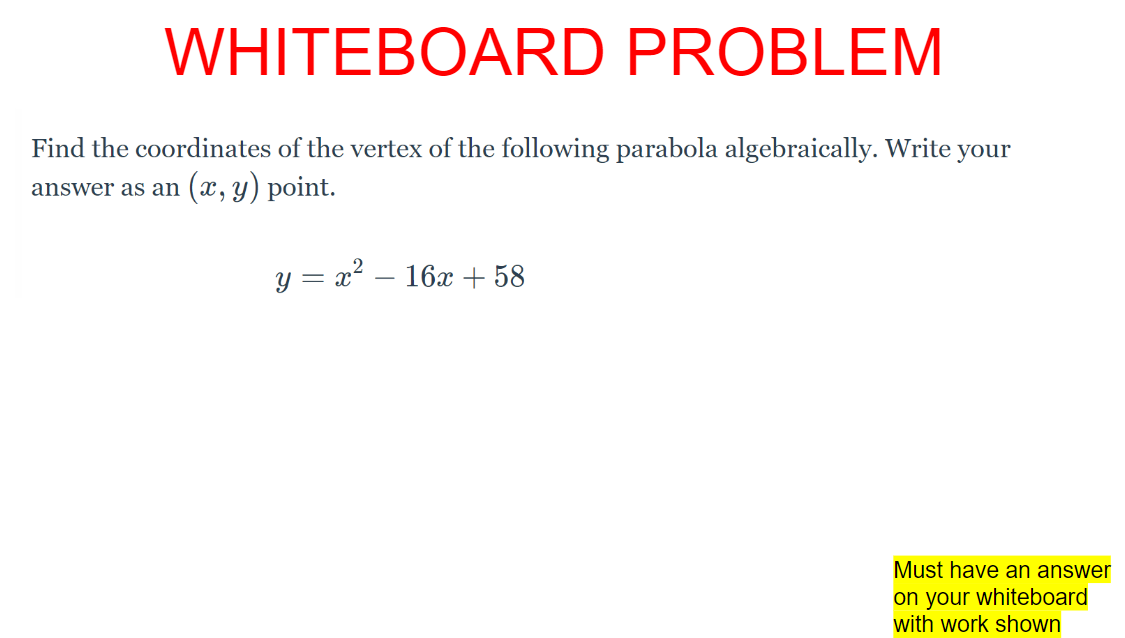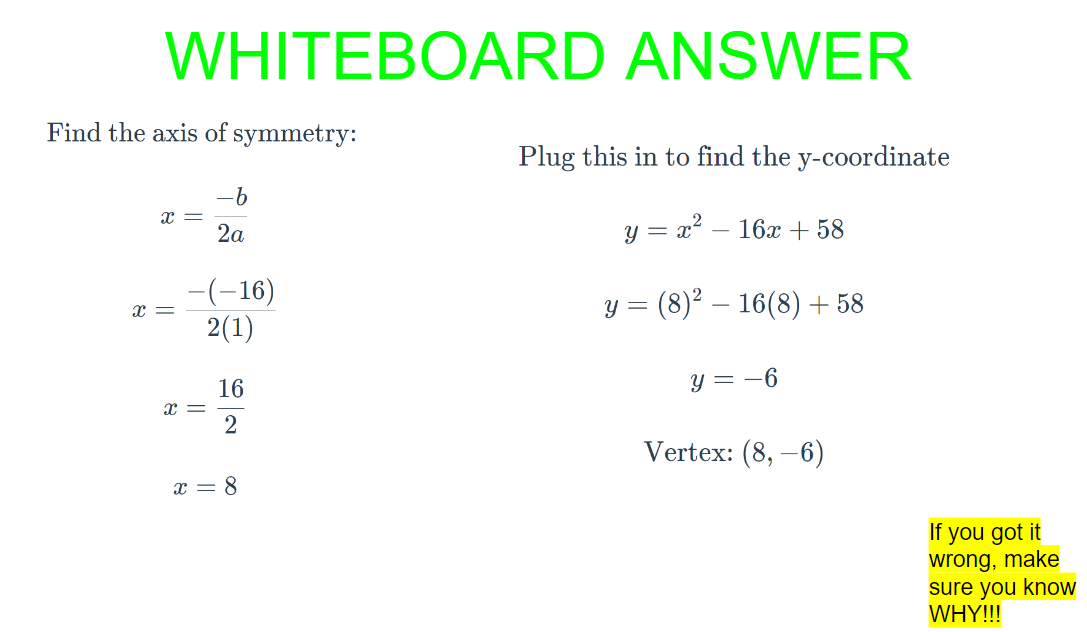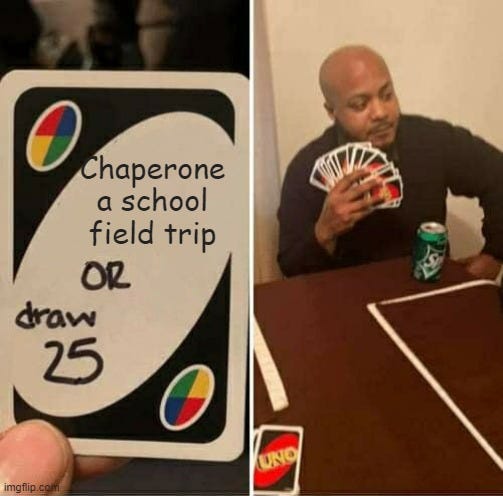How to Increase Engagement in Math Class without Increasing Planning Time
If I had a dollar for every time I planned a “fun and engaging lesson” that ended up going poorly, I’d be a rich man. A new trend in education is that all lessons need to be fun and engaging, otherwise how could we ever compete with YouTube and TikTok?
Personally, I love doing review games to prepare for exams and a fun lab every few weeks after grinding a few direct instruction lessons. However, I find that many times these “fun and engaging” lessons are only that: fun and engaging. Learning is minimal.
Today, I want to let you all in on the number one way to transform your classroom. It is possible to create a more engaging and active classroom, while still maintaining a high degree of learning. It is cheap to set up, easy to plan, and the outcomes that you will have in your class will be phenomenal.
Personal Whiteboards
The day I began using student personal whiteboards, my teaching changed forever. My class was more joyful, active, and engaging. My students actually told me that they enjoyed my class more because of them. So what are personal whiteboards and why use them?
Personal whiteboards offer students opportunities to showcase their work to you during guided practice and participate in problem solving. They are small whiteboards that are kept inside of their desks (or distributed before class starts) that they can write on and display towards you. This allows you to do the following:
Check for understanding during a lesson
Ensure that all students are practicing the problem
Notice misconceptions and get real time information on who is getting problems correct or incorrect
Many times when we present problems on the board or ask students to try out a problem, we cannot be sure if they are actually completing the task or faking it. If they are faking it, it is due to a misunderstanding or lack of attention to what was presented. Thus, it allows us to ensure students are participating, doing the math, and getting problems correct.
It is an instant engagement increaser and will immediately transform they way that you complete guided practice.
Personal Whiteboard Tips and Tricks
If you are planning to use whiteboards for the year, here are some tricks on how to set it up for success in your class.
1. Have routines and procedures surrounding whiteboards
Think about the best way for students to get the whiteboards without wasting too much class time. For example, in my class the only thing inside students desks are whiteboards. Since I pair my desks, each desk also has a bin with two markers and an eraser for both to share.
There is no passing out of materials needed. If markers dry up, students inform me and I keep a new box of markers near me while teaching for them to grab.
2. Build whiteboard questions into your lessons and PowerPoints
Whiteboard practice is a regular part of my lessons each and every day. Students expect it and know that after we take notes and I have gone over a few problems, we will be practicing on whiteboards.
My slide at the very top is labeled “WHITEBOARD PROBLEM” with the question presented. I give students a minute or so to complete it and show me the answer once they finish.
3. Know the answers to the questions before the whiteboard question and provide them on the second slide.
This is a big one that I forget to do sometimes. Definitely know the answer to the question you are having students complete on their whiteboard so you can provide feedback on if they got it correct or incorrect. When they show me their whiteboard, I usually tell them “yes or no” if they got it right or wrong. Have the answers written down or pulled up on your phone as you go through.
Also, it is very helpful if you put the answer on the next slide as a worked example. This can maximize your practice time since the problem is already worked out and provides students with the skill of checking their work, finding structure in solved problems, and knowing where they went wrong.
4. Be ready to model or move on
The best part of whiteboards is that it gives you information in the moment if students are understanding the content. For instance, lets say you do a whiteboard practice problem and all students get it right the first try. No need to spend time going over it, they all know how to do it! Validate them and move on.
Lets say that only 75% got it correct and the others did not. Then you can begin making choices on whether you would like to quickly model it on the board, or check in with those students later on in the lesson. If only a small percentage of students get it correct, then you know that you need to slow down and model more questions on the board.
5. Be strict with cleaning up and limiting distractions
Students will want to draw on the whiteboards, leave them on the floor, drop the markers, throw the markers, leave the markers uncapped, etc. Be strict with the materials and invest students into the materials. They will definitely enjoy using them, and let them know if they want to continue using them then they need to respect the materials in the class. Have a clean up routine and even assign a class job for a student to check all the materials before having the next class come in.
Whiteboards Over Technology
I firmly believe that whiteboards are much better than any other application available to check for student understanding in the moment. Many applications rely on quick results (Kahoot, Gimkit) of correct or incorrect. Pear Deck is useful since students can write on the screen, but doing math on the computer screen is time consuming for many students.

I have tried many, yet the whiteboard reigns supreme. It is extremely easy to screenshot a question that I want, put it into the PowerPoint, put the answer on the next slide, then have students complete it on their whiteboard. I can see their work clearly, I do not need to rely on technology, and its extremely easy for me to monitor the room to see if students are on task. I am not anti-technology and would love to see an application take over whiteboards, but as of right now whiteboards reign supreme.
The concept is definitely not new. Many other math educators have various different ways that they utilize whiteboards in class and I have gotten my tips from them. Definitely do some research to find out other tips in using them. It is worth the search.







